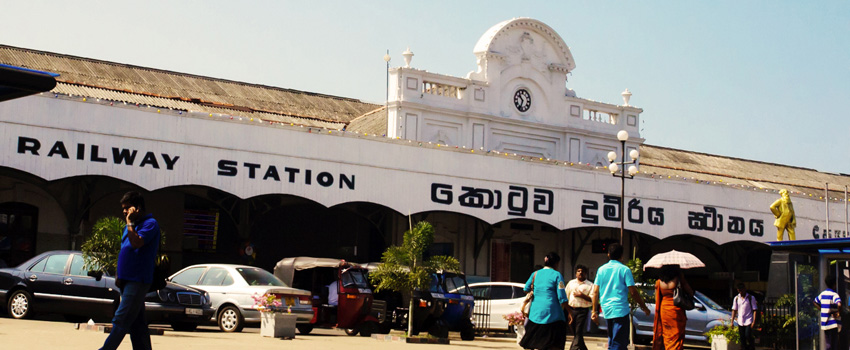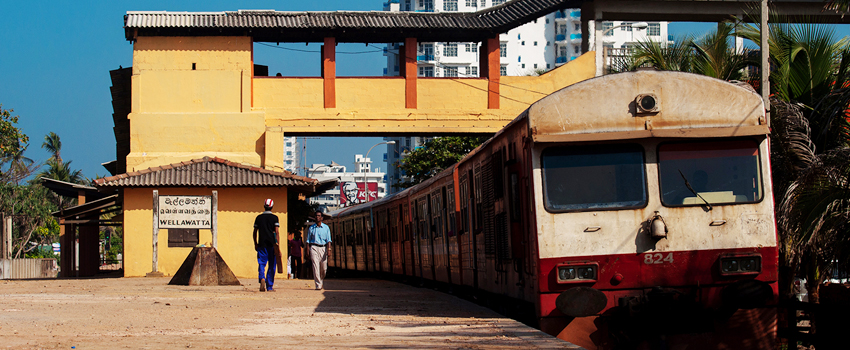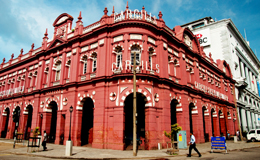Trains
Overview
Trains are the most adventurous and scenic mode of transportation in Sri Lanka. Main rail lines going to the south are along the coastline, offering spectacular views of the beach, and rail lines to the Hill Country go through breathtaking mountains ranges. Traveling by train is economical, relatively safe and a must-not-miss experience in Sri Lanka.
The Sri Lanka Railways, the government railway department, covers an extensive network of rails that reach most parts of the island. The railway network was originally built by the British in the 1800s, and has changed only a little since. The main railway terminal in Colombo is the Colombo Fort terminal, which has nine lines originating from Fort. The railway network comprises of three principal lines: coastal, hill country and northern. The coastal line runs along the west coast of the island from Puttalam in the north down to Matara in the south, with stops including Colombo, Bentota, Hikkaduwa and Galle. The hill country line, famously scenic, runs from Colombo to Badulla, with stops including Hatton (Adam’s Peak), Nanu Oya, Haputale, Bandarawela and Ella. The recently developed northern line runs from Colombo to Omantai, with stops including Kurunegala, Anuradhapura and Vavuniya. Additional branches of the northern line extend to Polonnaruwa, Batticaloa and Trincomalee.
Sri Lanka Railways offers three classes on their carriages. Depending on where the train is travelling, first class cars offer air-conditioning, sleeping compartments and separate bathroom facilities. It’s best to reserve first class tickets in advance as these seats tend to sell out quickly. Second class has more comfortable padded seats and fans in carriages. Second class seats can be reserved in advance, but not necessarily. Second class sleeper seats, which offer reclining seats for overnight rides, have to be reserved in advance. Third class is the most general class, which tends to be crowded and is not recommended for tourists. Not all trains offer first or second class options.
Train fares, though more expensive than buses, are extremely affordable. Advanced bookings should be made at the Fort Railway Station in Colombo or at the Berths Booking Office (open Mondays to Saturdays from 8.30 am to 3.30 pm or on Sundays from 8.30 am to noon). Online bookings are not available but train schedules and fares can be viewed at railway.gov.lk
Some private companies have recently begun to offer tourist-oriented luxury carriages in collaboration with Sri Lanka Railways. These carriages have better seating options, modern facilities and onboard meals among others. More information on availability of these carriages can be viewed at exporail.lk or rajadhani.lk
Though trains tend to be less cumbersome than buses, beware that trains are equally congested during rush hour, especially on the coastal line. Usually from the 6 a.m. to 9 a.m. and 4.15 p.m. to 7 p.m. on weekdays, trains are overwhelmed by the local office crowd, some of whom horrifyingly travel on the surfing or by hanging onto the railings on carriages. (Don’t try this; it’ll kill you.) Also, note that trains travel slower than buses, are never on time and delays are frequent.
More InfoVenue Details & Map
Colombo Fort Railway Station
Fort, Colombo



